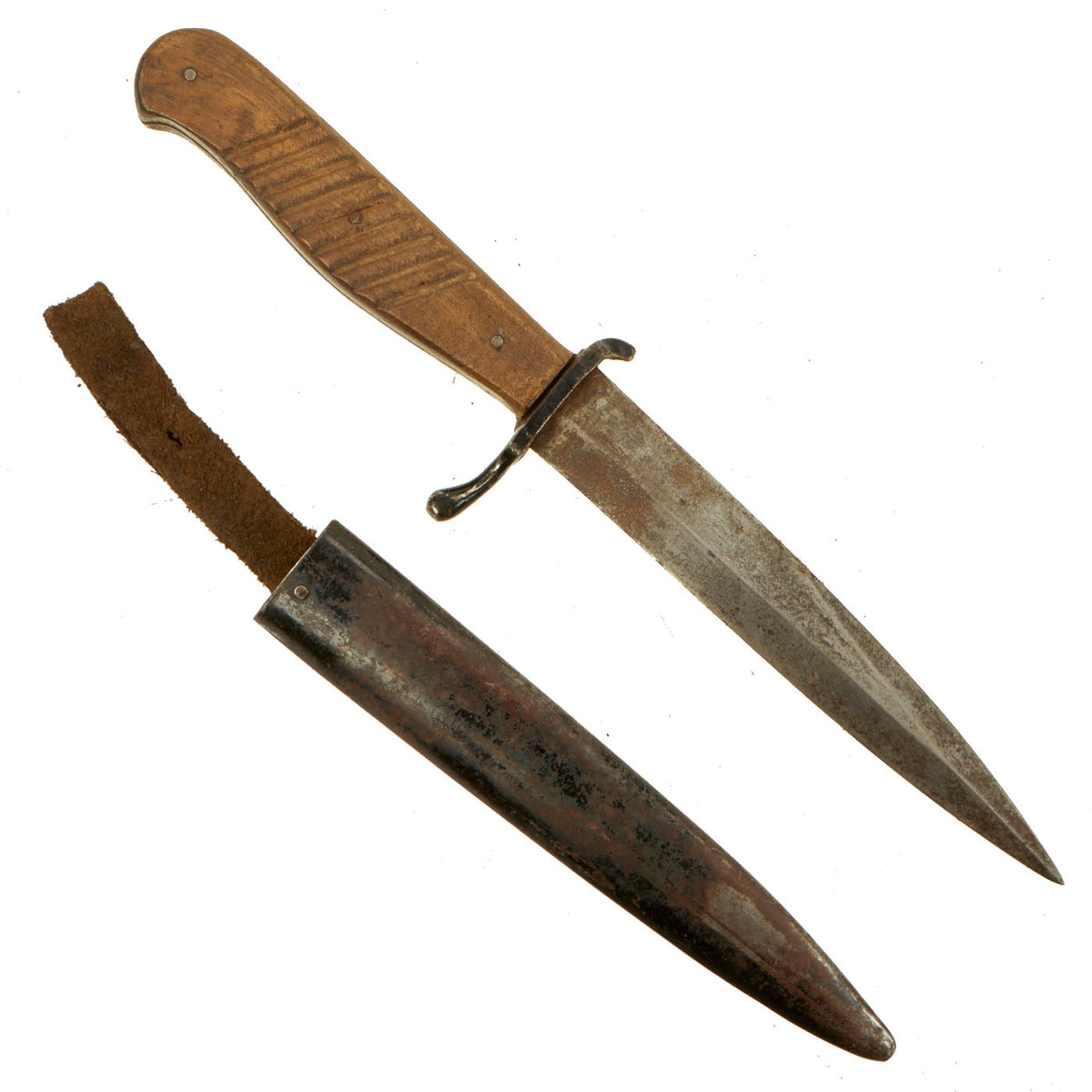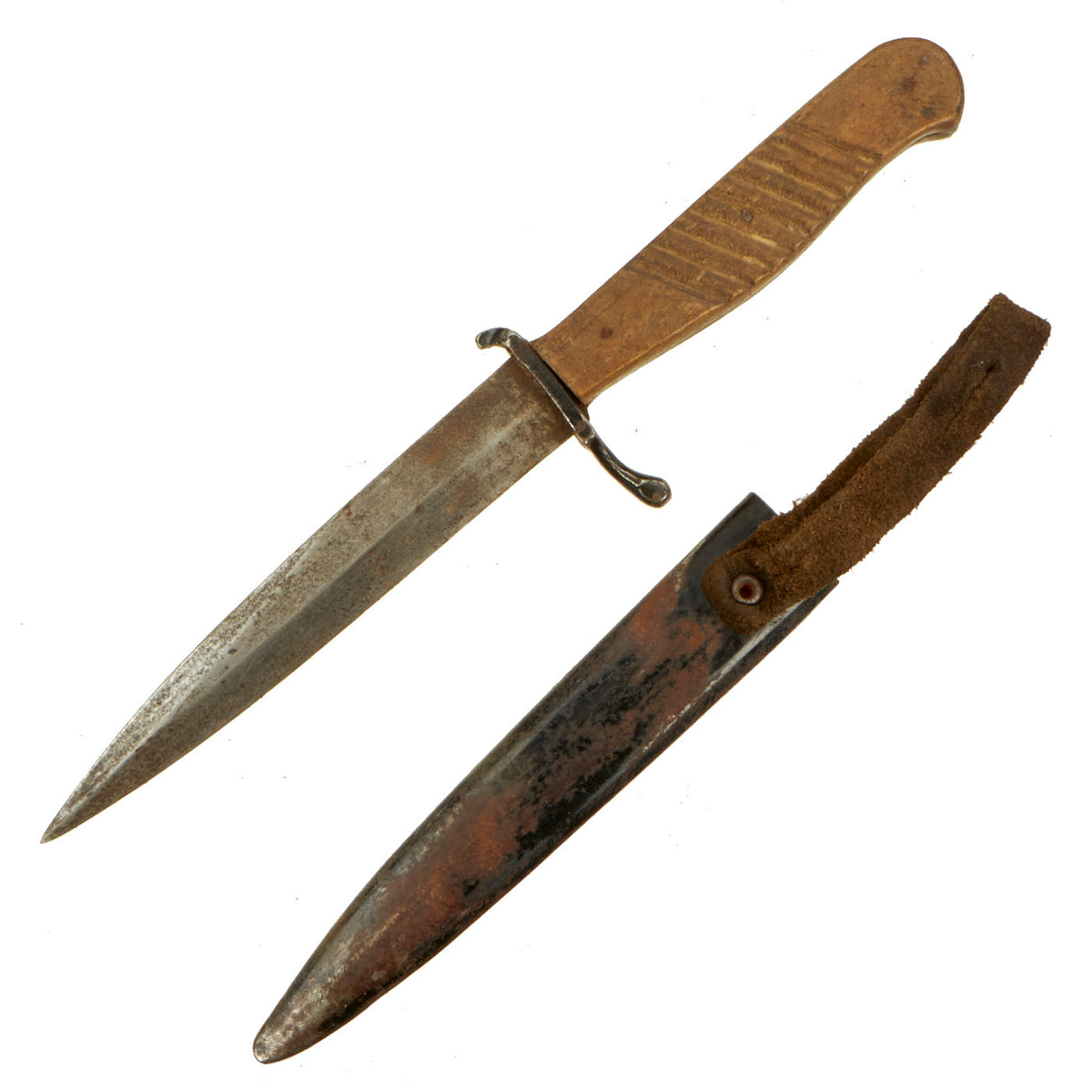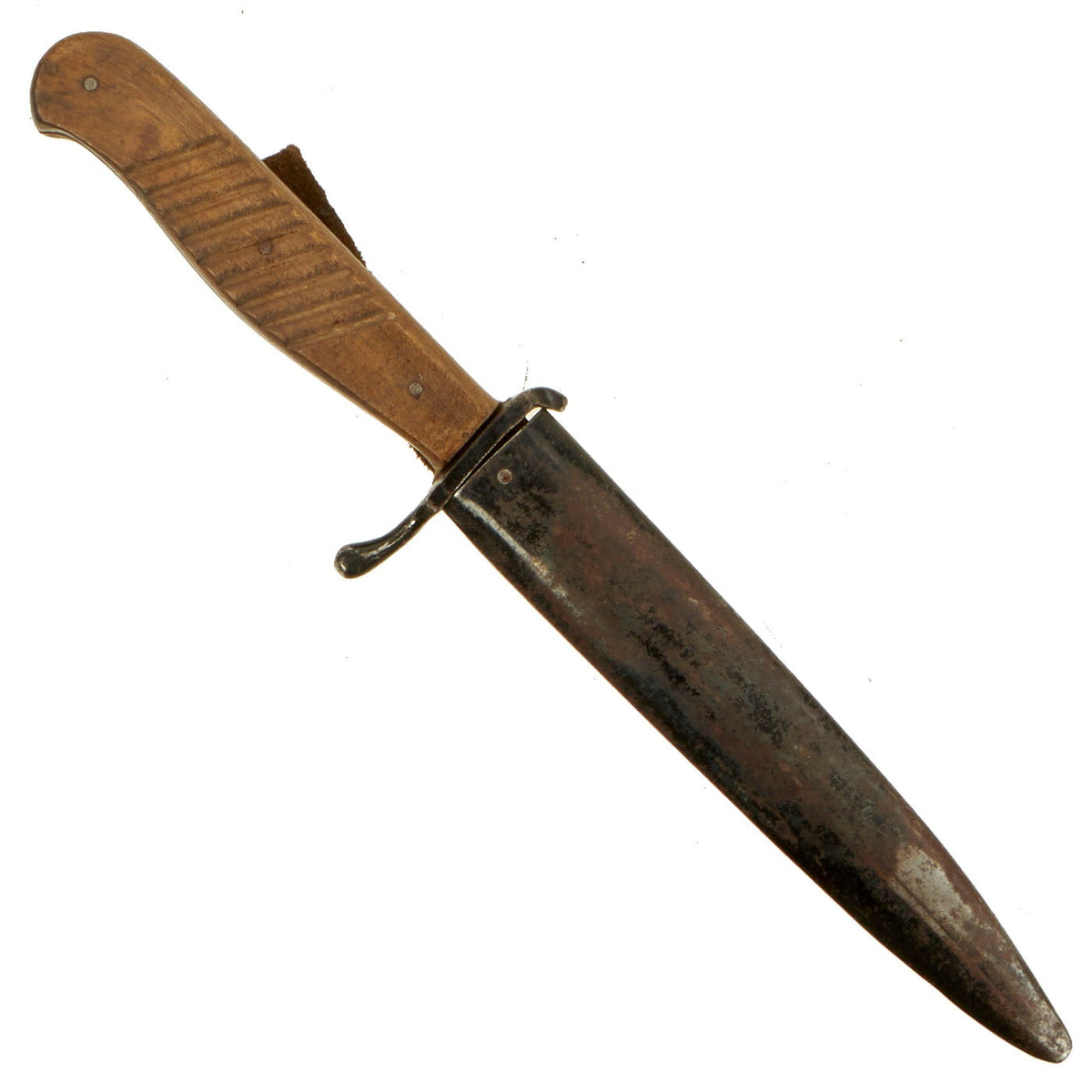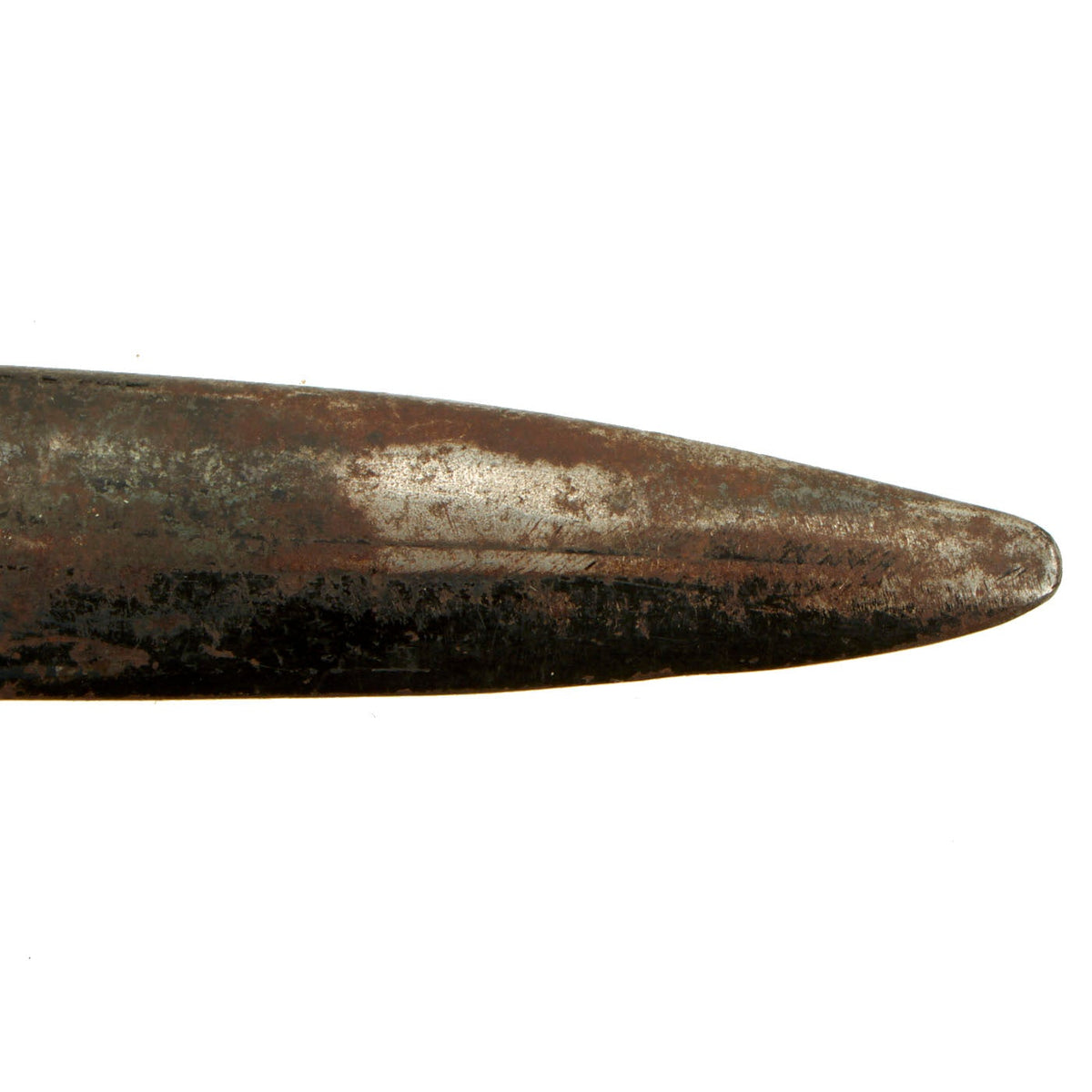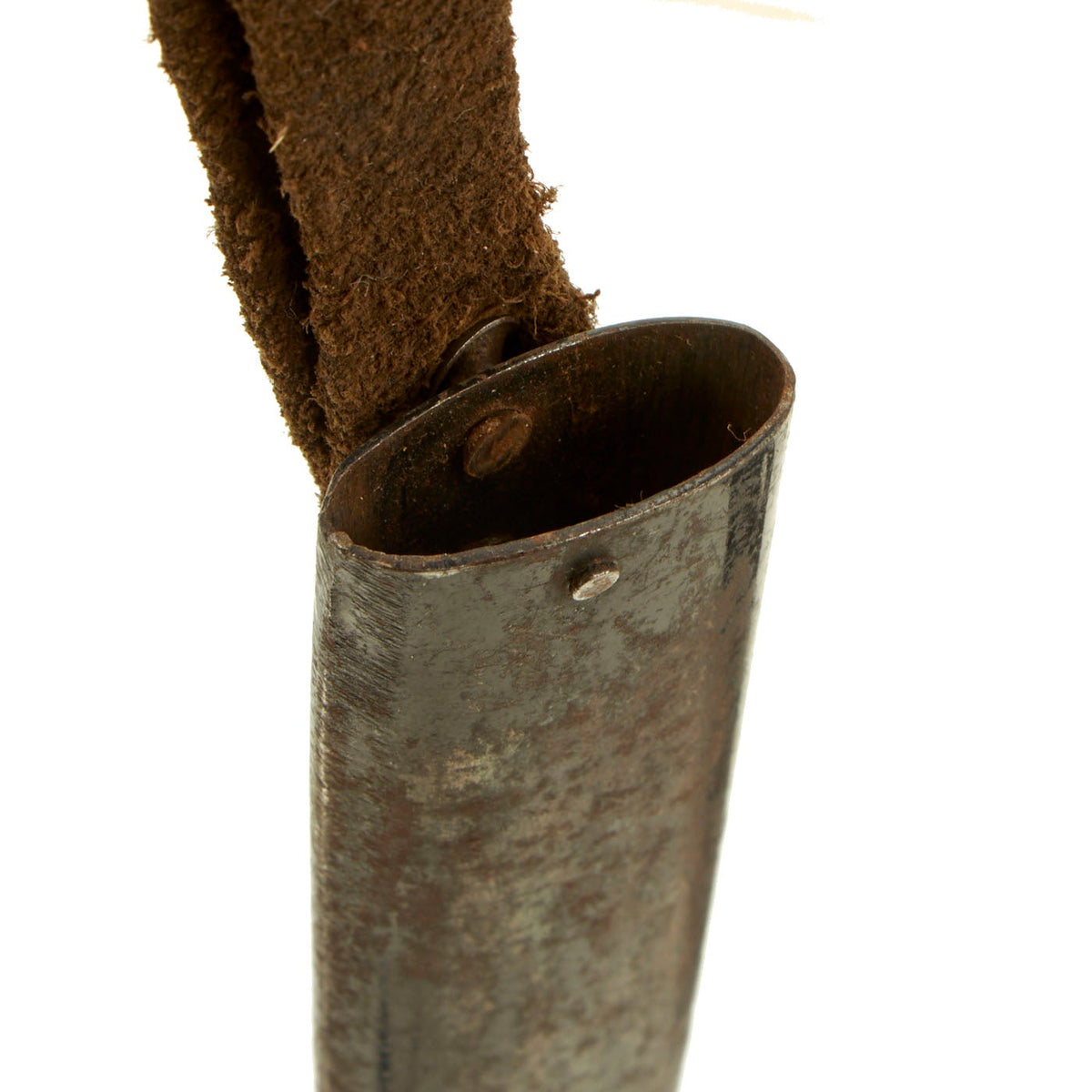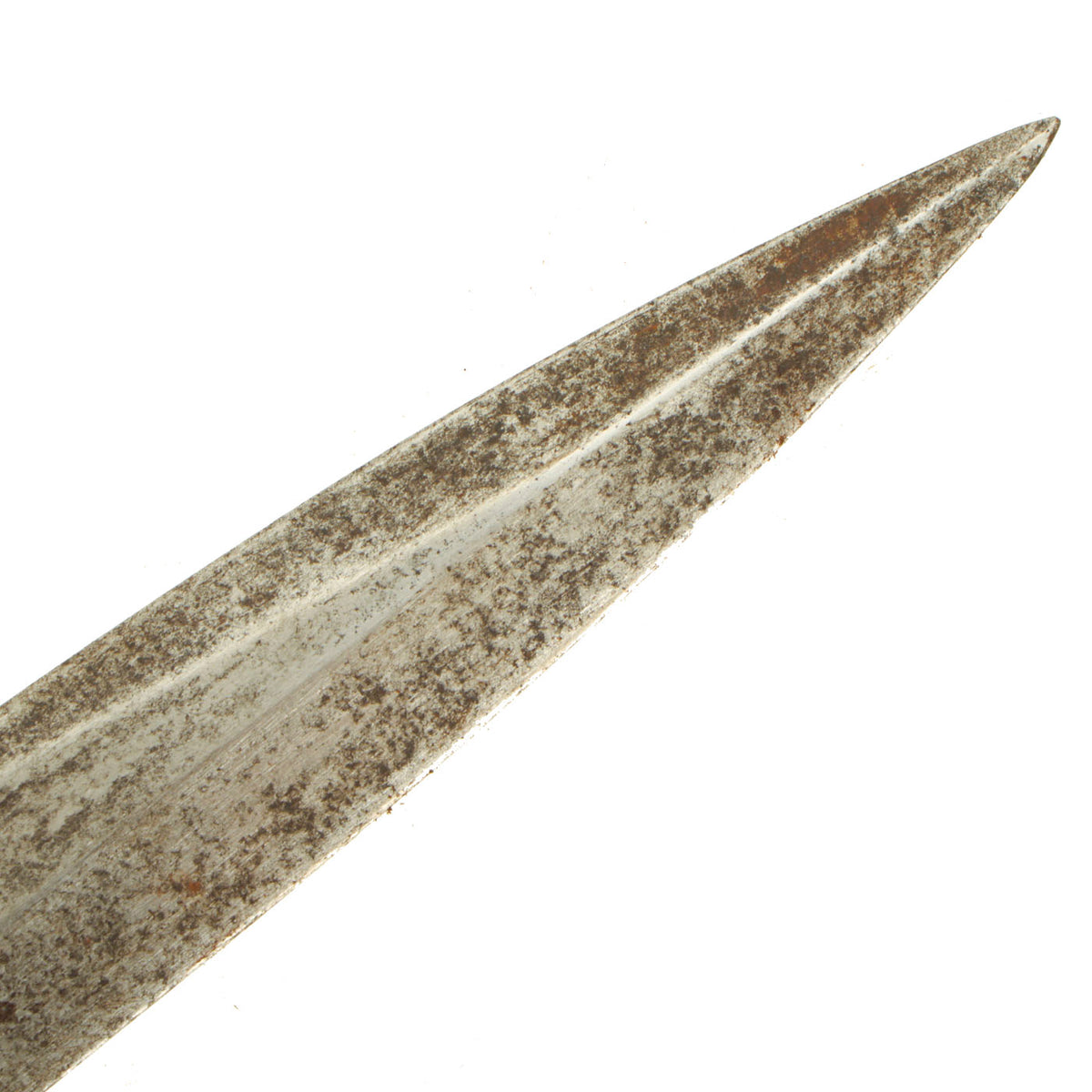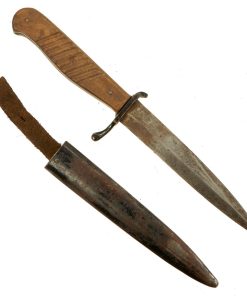Original German WWI Fighting Trench Knife Nahkampfmesser with Original Rolled Steel Scabbard Original Items
$ 350,00 $ 105,00
Original Item: Only One Available. Fitted with a single edge and a slight Bowie style blade this is an original fighting knife used by the Germans in WW1. Offered in very good condition, this knife has classic Austro-Hungarian wood grip panels secured by three pins. The blade is one sided but has a small return of about two inches at the point. The blade is un-sharpened in bright steel and in excellent condition with minor surface rust.
The knife comes in a genuine rolled steel World War One scabbard with leather belt loop. The black paint on the scabbard is retained at about 50% leaving the uncovered metal sections with a light rusting. The leather for the belt loop is extremely soft and fragile and has completely lost its protective coating.
No visible markings, but 100% original, and very good example for display in any quality German Great War edged weapon collection.
Measurements:
Blade Length: 5 ⅞ inches
Handle Length: 4 ½ inches
Total Length: 10 inches
Scabbard Length: 6 ½ inches
The German Nahkampfmesser (translated: close combat knife) was the standard issue German combat knife during the First World War. It remained in service in modified form through the end of the Second World War. Most of these knives had slab wooden grips and metal sheaths and were sturdily made. According to one authoritative source, German-issued trench knives of World War I were “conventional, general-purpose, cut-and-thrust knives” with blades that were “for the most part approximately six inches in length, single-edged with a top leading false edge … although double-edged blades are occasionally encountered.”
After the French Nail was employed against them, German forces on the Western Front also began to employ converted steel barbed-wire stakes as stabbing weapons for use by their own soldiers.
German trench knives carried during World War II were similar in design and are usually known today as boot knives, although they seldom were carried in boots. Most also had steel sheaths with clips that could be attached to boots, webbing or clothing, and most were made by government contractors and issued as combat gear.
Fast Shipping with Professional Packaging
Thanks to our longstanding association with UPS FedEx DHL, and other major international carriers, we are able to provide a range of shipping options. Our warehouse staff is expertly trained and will wrap your products according to our exact and precise specifications. Prior to shipping, your goods will be thoroughly examined and securely secured. We ship to thousands clients each day across multiple countries. This shows how we're dedicated to be the largest retailer on the internet. Warehouses and distribution centres can be located throughout Europe as well as the USA.
Note: Orders with more than one item will be assigned a processing date depending on the item.
Before shipping before shipping, we'll conduct a thorough inspection of the items you have ordered. Today, the majority of orders will be delivered within 48 hours. The delivery time will be between 3-7 days.
Returns
The stock is dynamic and we cannot completely manage it because multiple stakeholders are involved, including our factory and warehouse. So the actual stock may alter at any time. It's possible that you may not receive your order once the order has been made.
Our policy is valid for a period of 30 days. If you don't receive the product within 30 days, we are not able to issue a refund or an exchange.
You can only return an item if it is unused and in the same state as the day you received it. You must have the item in its original packaging.
Related products
Uncategorized
Band of Brothers ORIGINAL GERMAN WWII Le. F.H. 18 10.5cm ARTILLERY PIECE Original Items
Uncategorized
Uncategorized
Uncategorized
Uncategorized
Armored Burgonet Helmet & Polearm from Scottish Castle Leith Hall Circa 1700 Original Items
Uncategorized
Uncategorized
Uncategorized
Uncategorized
Uncategorized
Uncategorized
Uncategorized
Uncategorized
Uncategorized
Australian WWII Owen MK1 Machine Carbine SMG Custom Fabricated Replica with Sling Original Items
Uncategorized
Uncategorized
Armoured Fighting Vehicles of the World: AFVs of World War One (Hardcover Book) New Made Items
Uncategorized
